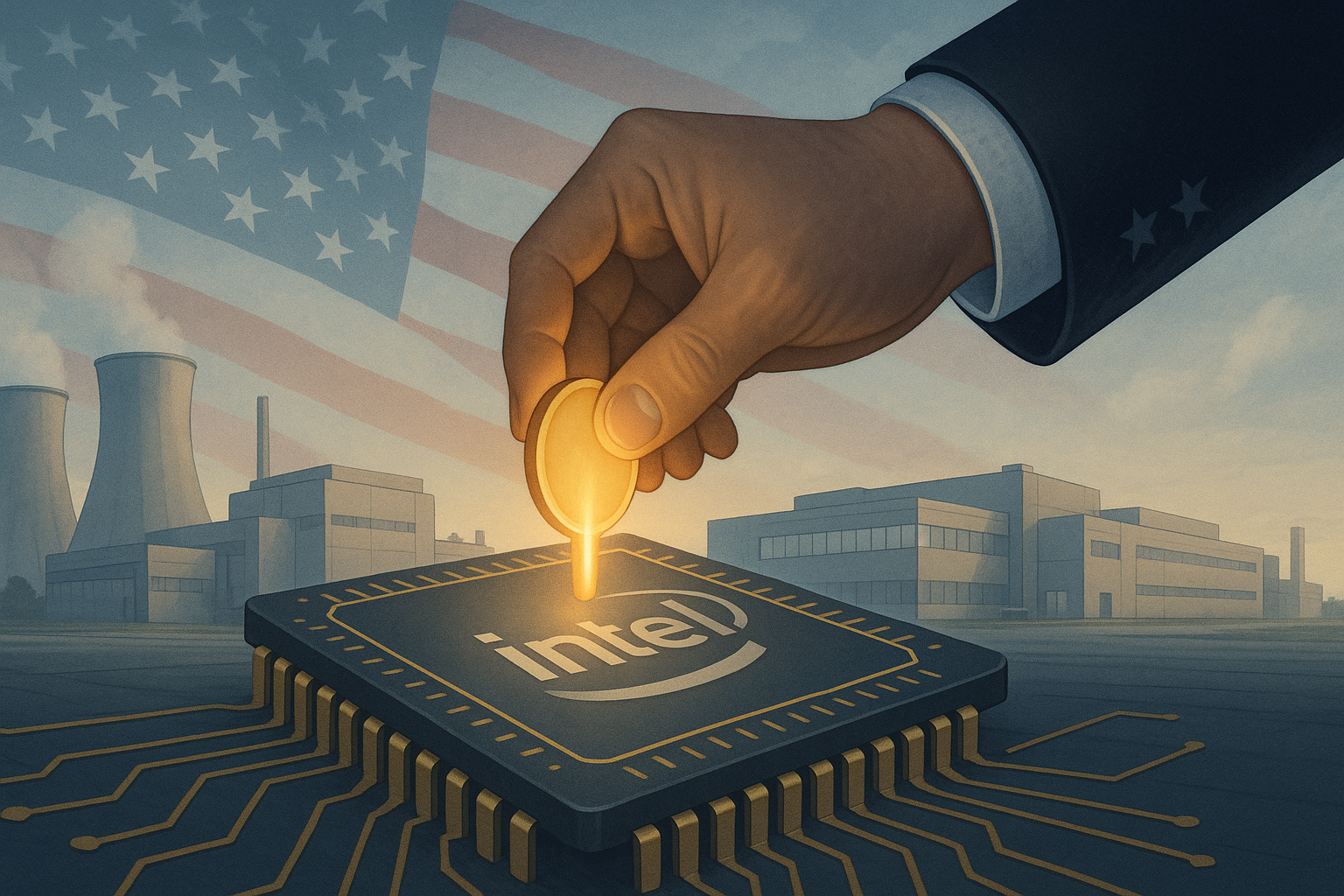In a twist that would've seemed unthinkable during the free-market worship of previous Republican administrations, Intel shares jumped 7% Thursday after Bloomberg reported the Trump administration is considering taking a stake in the struggling chip giant.
Let me be blunt here: This is what happens when a former titan of American innovation falls so far behind its global competitors that government intervention starts looking like the only viable lifeline.
The company that practically invented Silicon Valley now finds itself in the humbling position of potential government ward. Twenty years ago, if you'd suggested to Intel executives that they'd one day be looking to Washington for financial rescue while Taiwan's TSMC and South Korea's Samsung built cutting-edge factories on American soil, they'd have shown you the door. Funny how things change.
I've covered the semiconductor industry since the days when Intel's tick-tock product cycle was as reliable as sunrise. The company's fall from grace hasn't been sudden—it's been a slow-motion technological car crash spanning multiple CEOs and strategic missteps.
The potential government stake would help bankroll Intel's much-delayed Ohio manufacturing complex. These factories aren't just about making chips; they're physical monuments to America's belated realization that semiconductor independence isn't optional in a world where everything from toasters to fighter jets runs on silicon.
Look, the predicament facing Intel is stark. After dominating chipmaking for decades, the company botched its manufacturing advancement so thoroughly that its market cap now sits at roughly one-seventh of Nvidia's. That's like watching the New York Yankees demoted to minor league status over a decade—painful, embarrassing, and almost impossible to comprehend.
For the Trump administration, helping Intel presents an elegant solution to multiple problems. It checks the "bringing manufacturing home" box that resonates with the president's economic message. It addresses legitimate national security concerns about chip supply. And (though nobody will say this part out loud) it provides a government backstop for the last American company capable of manufacturing advanced chips domestically.
The politics of this are fascinating, aren't they? Here we have a Republican administration contemplating what amounts to partial nationalization of a cornerstone American corporation—something that would've been ideological heresy during the Reagan years.
But times change. And semiconductor manufacturing has evolved from mere business to geopolitical chess piece.
What should make investors nervous (or relieved, depending on your perspective) are the strings that inevitably come attached to government money. Will Intel be required to prioritize defense applications? Will there be restrictions on technology sharing with certain countries? And how might all this affect Intel CEO Pat Gelsinger's ambitious turnaround strategy?
I spoke with several industry analysts yesterday who generally viewed government involvement as positive for Intel's medium-term prospects. "They need the capital, and government backing gives them breathing room," one told me, requesting anonymity to speak freely about a major client.
(Worth noting: The Ohio factory project was already slated to receive substantial funding through the CHIPS Act, making this potential equity stake something of a double-dip into government coffers.)
Having watched the semiconductor landscape transform over decades, I can tell you this represents uncharted territory. The boundary between national security imperatives and industrial policy has never been fuzzier, and Intel now sits squarely at that intersection.
Wall Street's initial thumbs-up suggests investors see government involvement as a net positive. But semiconductor manufacturing isn't like other industries—the technical complexities and decade-long investment cycles make this a particularly tricky dance between public and private interests.
One thing's certain: Intel's journey from undisputed industry leader to potential government investment project is a cautionary tale about complacency in technology. The company that once defined American innovation excellence now needs Uncle Sam's help just to stay in the game.
And that might be the most telling development of all.




